Companies supplying structural steel components in the EU after 1st July 2014 must be certified to BS EN 1090-1 and implement CE Marking for their products in order to comply with the Construction Products Regulations (CPR).
Sign 2000 are the first company within the British Sign & Graphics Association to achieve the standard.
What are BS EN 1090-1 and CE Marking of Structural Metalwork?
EU & UK Law
Some elements of the Construction Products Regulations (CPR) came into force in April 2011 to build upon the European Construction Products Directive. The aim of the directive was to harmonise the safety performance of construction products across the EU and they apply to anything placed on the market, whether imported or manufactured in the EU. The CPR defines six principles for materials that are to be used in civil engineering:-
- Mechanical resistance and stability.
- Safety in case of fire.
- Hygiene, health and the environment.
- Safety in use.
- Protection against noise.
- Energy economy and heat retention.
2013
As of 1st July 2014 any “series” manufactured, structural metal components or kits that have been either made in the UK or imported, and to which a harmonised European Standard applies, must comply with the CPR and CE marking requirements. The harmonised European Standard that applies to structural metalwork is BS EN 1090-1 and it will not be possible for any company to supply structural metalwork after the 1st of July 2014 unless it conforms to this standard and carries a legitimate CE mark or certification. New legislation was introduced in 2013 to allow the CPR to be enforced by the Trading Standards Authority, which will have the power to stop a business from trading and to withdraw any products supplied after 1st July 2014, until the company has shown that it complies with the regulations. This will be costly for businesses that are discovered not to comply with CPR, as they will be unable to trade during the long period needed to implement BS EN 1090-1 (see below) and will have to carry the cost of product recalls and fines.
To comply with the CPR the following are the main criteria:-
- Factory production control on the basis of documented, permanent and internal control of production in a factory, in accordance with the relevant harmonised technical specifications.
- Initial inspection of the manufacturing plant and factory production control.
- Continuous surveillance, assessment and evaluation of factory production control.
- Determination of product type on the basis of type testing, type calculations tabulated values or descriptive documentation of the product.
- Audit testing of samples taken before placing the product on the market.
From July 2013 under CPR it became mandatory for manufacturers to draw up a declaration of performance and apply CE marking to any construction product covered by a harmonised European Standard.
From July 2014 welded steel structures, which are subject to a load, must comply with the CPR and therefore be CE marked or certified.
In order to meet the requirements of CPR for the supply of steel structures the company must be accredited to EN 1090-1:2009+A1:2011 – Execution of steel structures.




 European Sign Federation
European Sign Federation